Grimshaw Foundation’s Big Build 2023: ‘Recycled Room’
Three London schools unveil ‘Recycled Room’ installations as part of the Grimshaw Foundation’s Big Build 2023
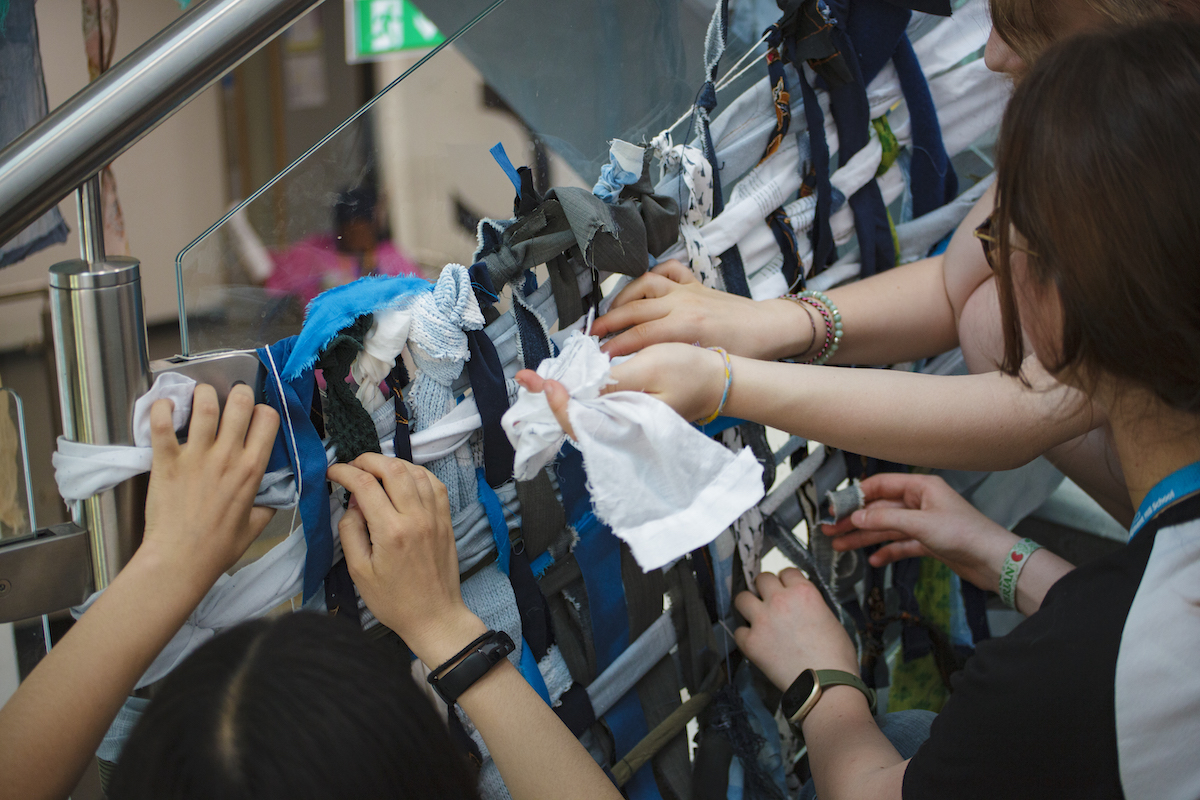
As part of a year-long programme, led by the Grimshaw Foundation, focused on sustainability in architecture and design, three ‘Recycled Rooms’ have been designed and built by students from three London schools. Students responded to the design challenge by creating sensory spaces to support mental health, students with S.E.N. and to highlight the importance of sustainable design.
Grimshaw Foundation partnered with TRAID, Get Living, D-Lab, The Lab E20, Islington Climate Centre and Urban Learners to raise awareness around waste, the reuse of materials and sustainable fashion and design.
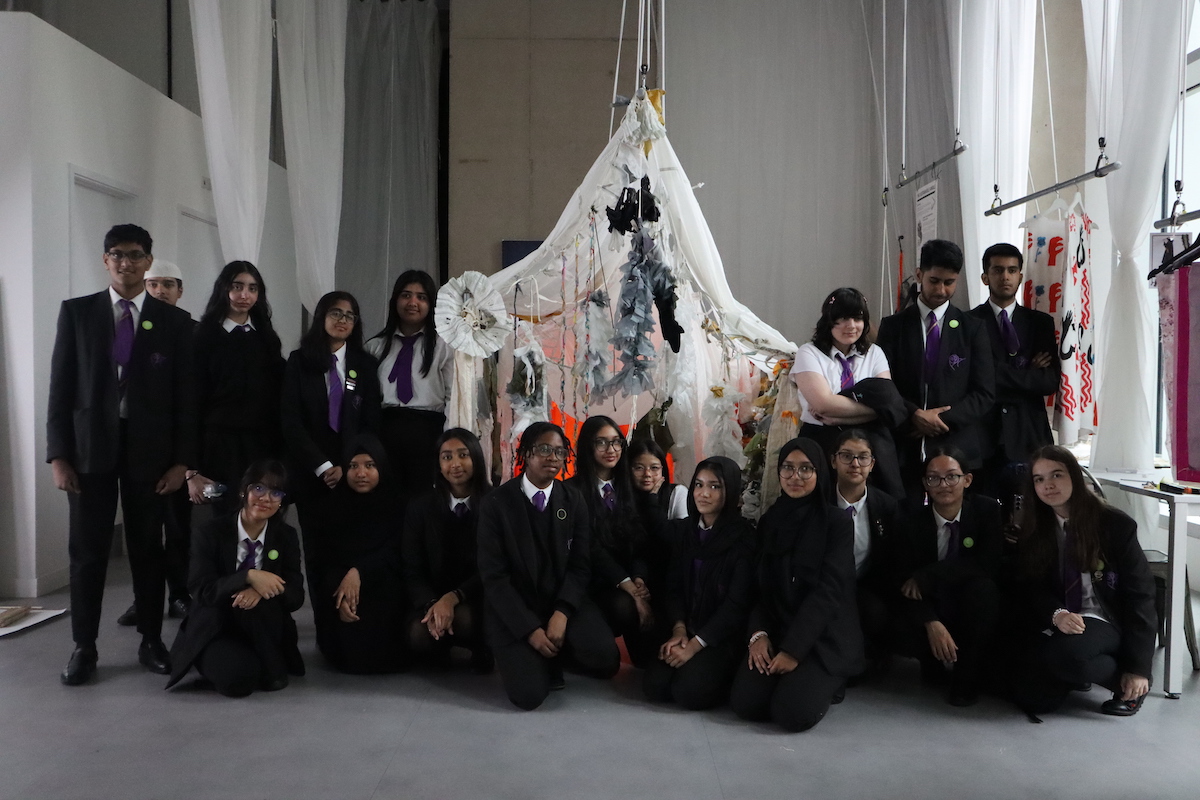
A series of workshops enabled students at Parliament Hill School in Camden, Regent High School in Camden, and Stratford School Academy in Newham to explore the versatility of reuse and recycled clothing and textiles. The aim was to transform a space within their school to show how their designs can impact the school and the wider community. Parliament Hill school redesigned the staircase atrium connecting the art rooms to the DT labs, Regent High created a floating canopy to connect the Ground floor reception to the first-floor mezzanine, and Stratford School Academy transformed the Lab E20 community space.
Parliament Hill School
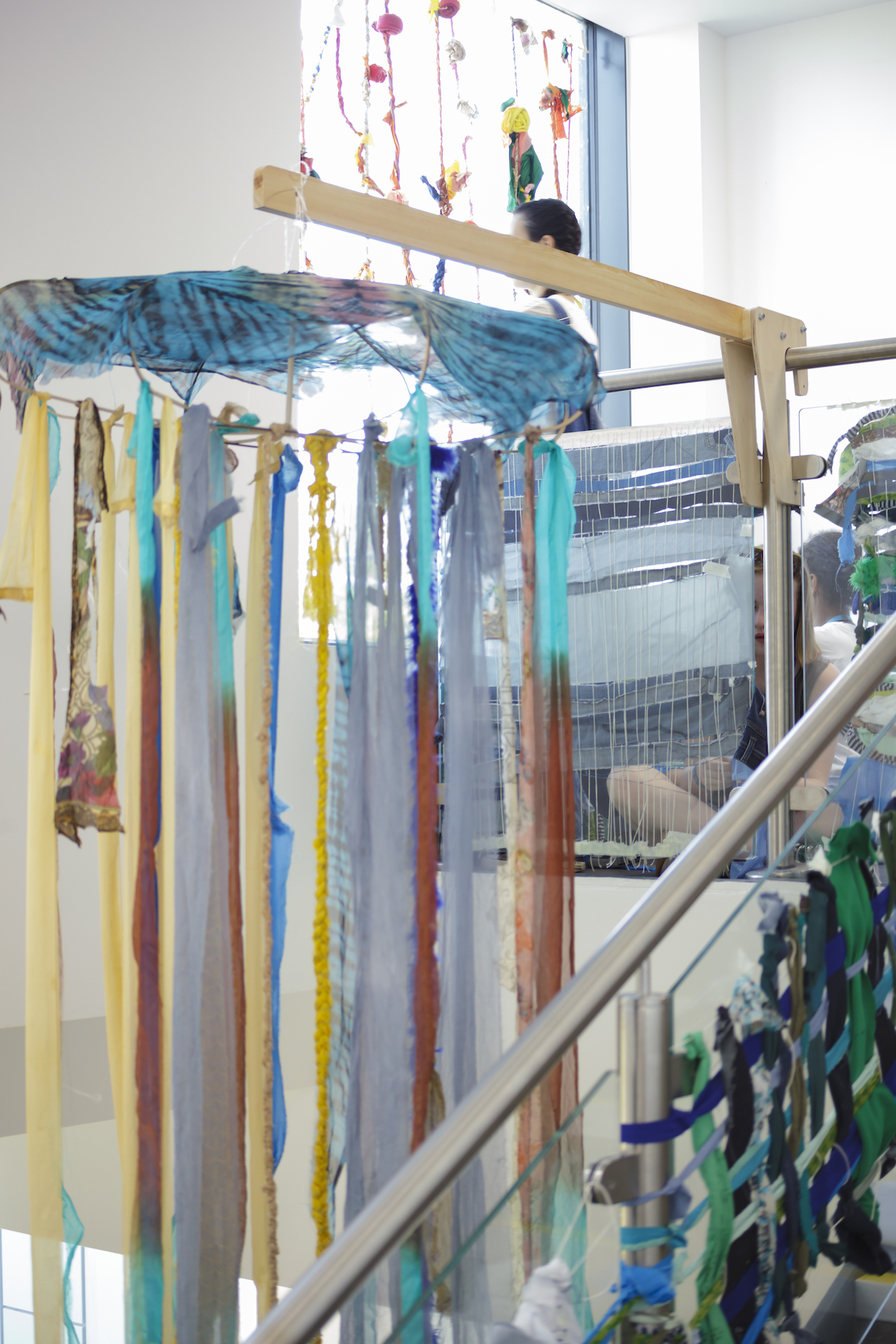
Parliament Hill School students were shocked to discover the amount of ocean pollution caused by the textile industry. Having only heard of the statistics surrounding how plastic waste such as plastic bags, single use water bottles and plastic straws, have impacted our oceans, they wanted their Recycled Room to show how clothes do the same. Using clothes donated by TRAID, they transformed the stairwell of their building into an Ocean Themed Installation. Using a variety of blue and green clothes, from jeans to pyjamas, they tore, wove, draped, stuffed, plaited and macraméd an aquatic scene that completely transformed the space. At the top of the stairs, they created a vibrant coral paradise that they hung from the window. The focal piece was a large jellyfish suspended from the top balustrade which not only provided a spectacle for the transformed space, but also drew attention to the students' message on ocean pollution, encouraging wider discussions around plastic consumption, clothes waste and sustainability.
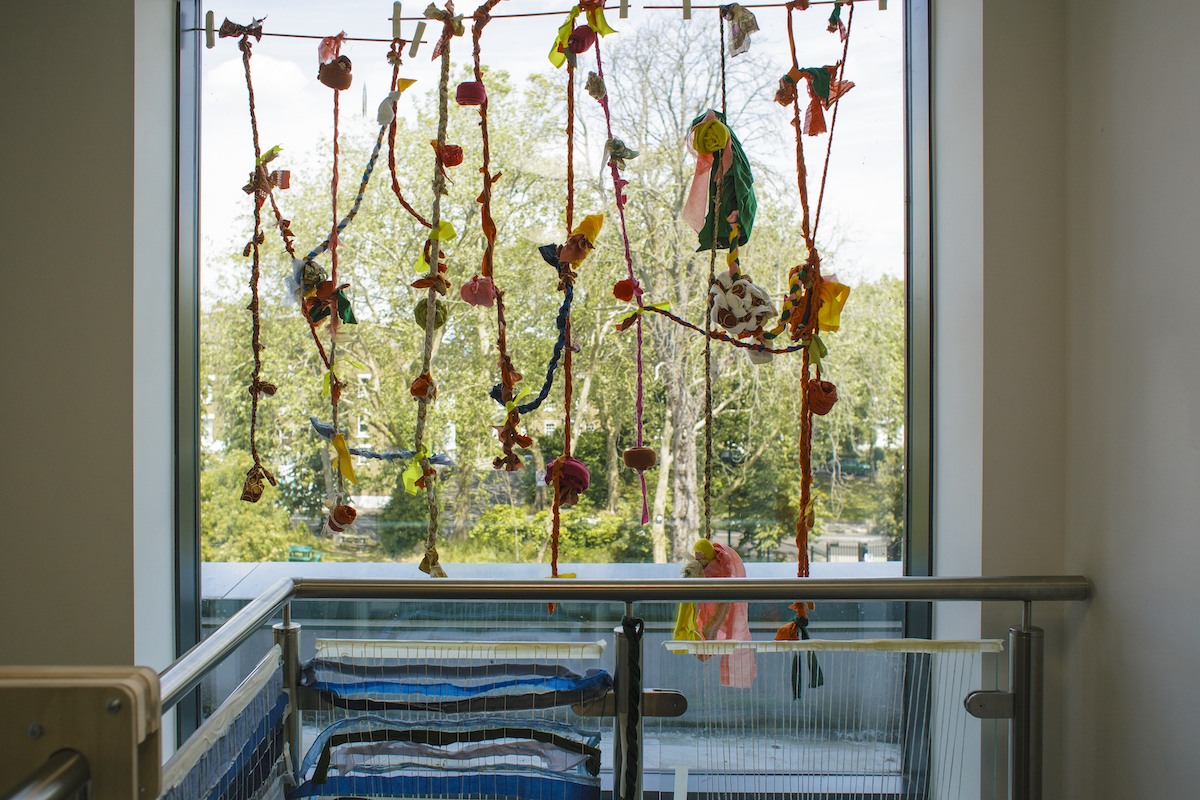
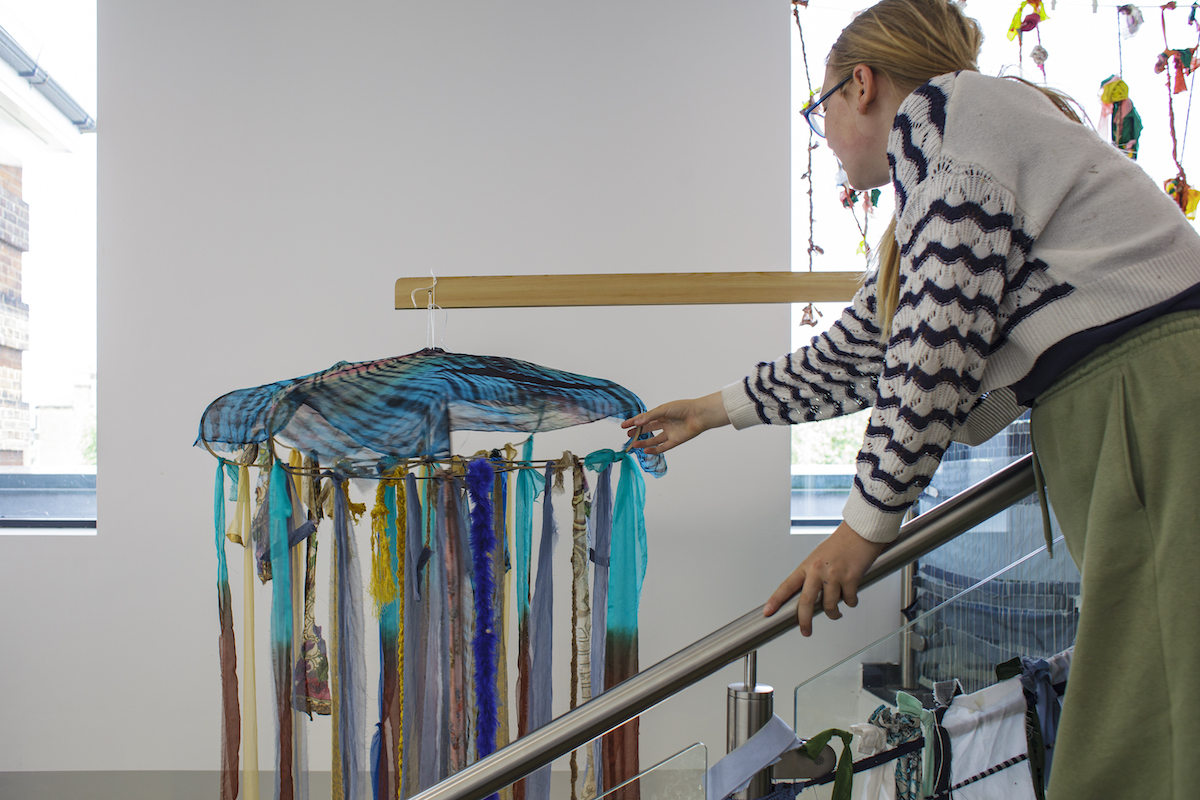
Stratford School Academy
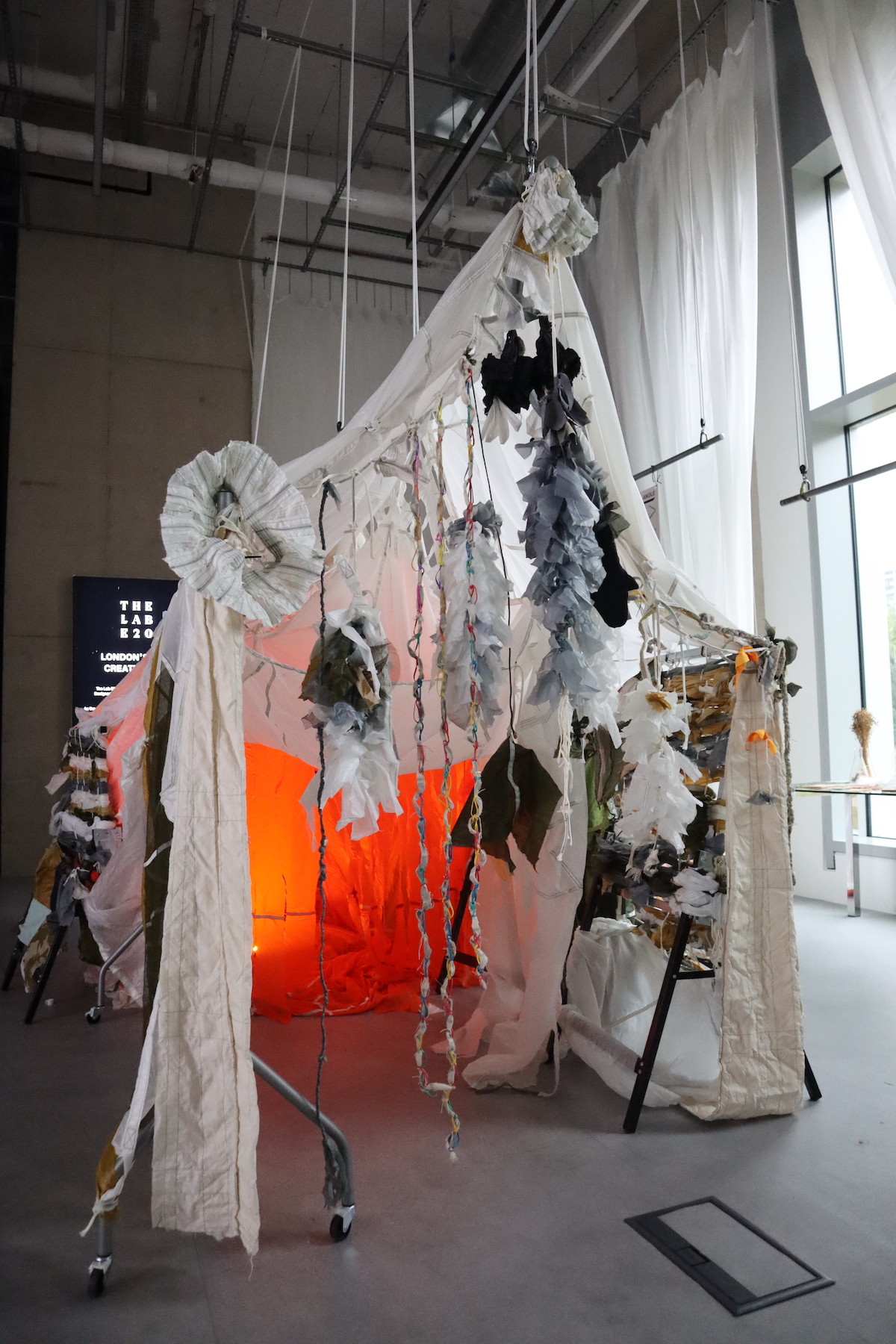
Stratford School Academy were invited to take part in a group exhibition exploring sustainable design — ‘What’s in My Home?’ at The Lab E20 — the community and design hub in Stratford’s East Village (on show until September 2023). Using surplus army fabric and material responsibly sourced by artist and fashion designer Christopher Raeburn of RÆBURN, the students crafted a den-like structure, creating their own space within the Lab. White parachute fabric and netting was draped across rods and poles to create a tent shape, with a patchwork of fabrics cladding the makeshift walls. At the centre of the structure, an enclosed orange room glowed like the yolk of an egg, creating a space one student described as ‘womb-like’ due to its cosy interior, with bean bag seats made from stuffing larger pieces of fabric with scraps. The inspiration for this space was rooted in mental health, with the students taking inspiration from the playful act of den-making that was prevalent in their childhoods to create a safe space to destress. They reinvented the materials once used for safety in the military (camouflage and parachutes) to provide a different sense of protection and comfort that can be experienced by all who visit the Lab E20 during the

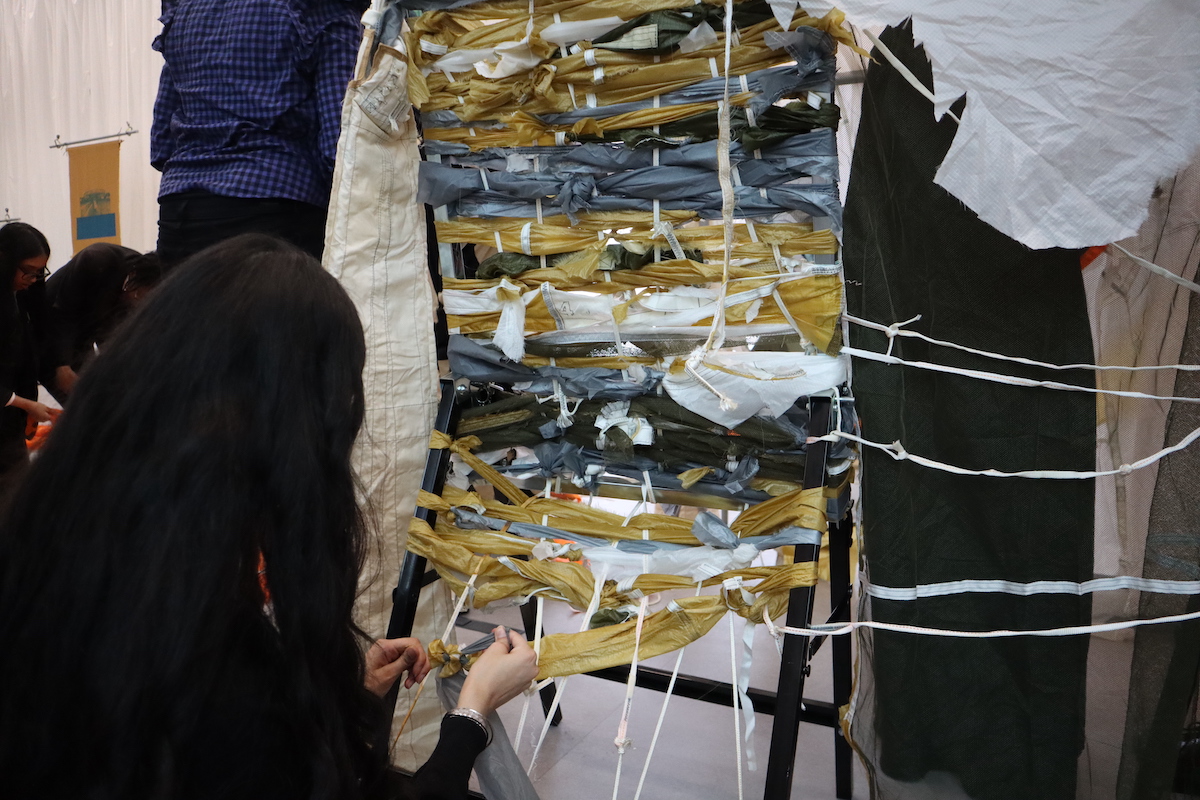
Regent High School
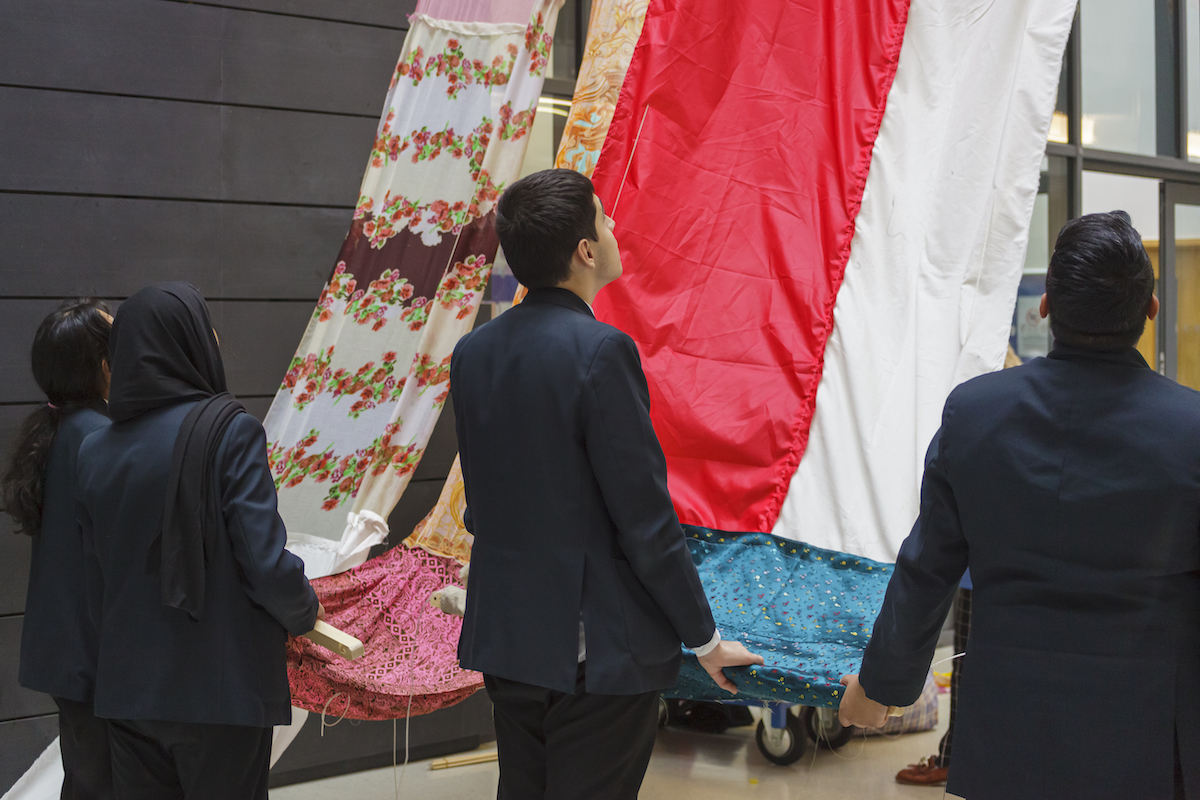
At Regent High School, the students were tasked with transforming the large and exposed space by their reception, which is overlooked by a mezzanine. The design of this room highlights the message of excessive and unnecessary waste using waste clothing supplied by TRAID, while also connecting the hundreds of students passing by every day, to the beauty of re-use and the functionality of a repurposed space. The students dedicated the room to their S.E.N. peers, and it has become a sensory space that provides refuge from the busy school reception and circulation areas. Taking advantage of the three-metre-high ceilings, the students used scarves, tents, and saris to create a translucent canopy that was draped from the mezzanine, changing the light underneath. Warm toned fabrics create decorative wall hangings that vary in size and shape, with bells attached to some pieces to create an auditory experience. The cool toned fabrics are plaited and tied together to hang from the mezzanine like ‘raindrops’ creating a subtle screen for privacy. Boulder-like cushions, created using some of the bulkier clothes, provides visitors to the room with a space to sit, relax, and take in the colourful installation.
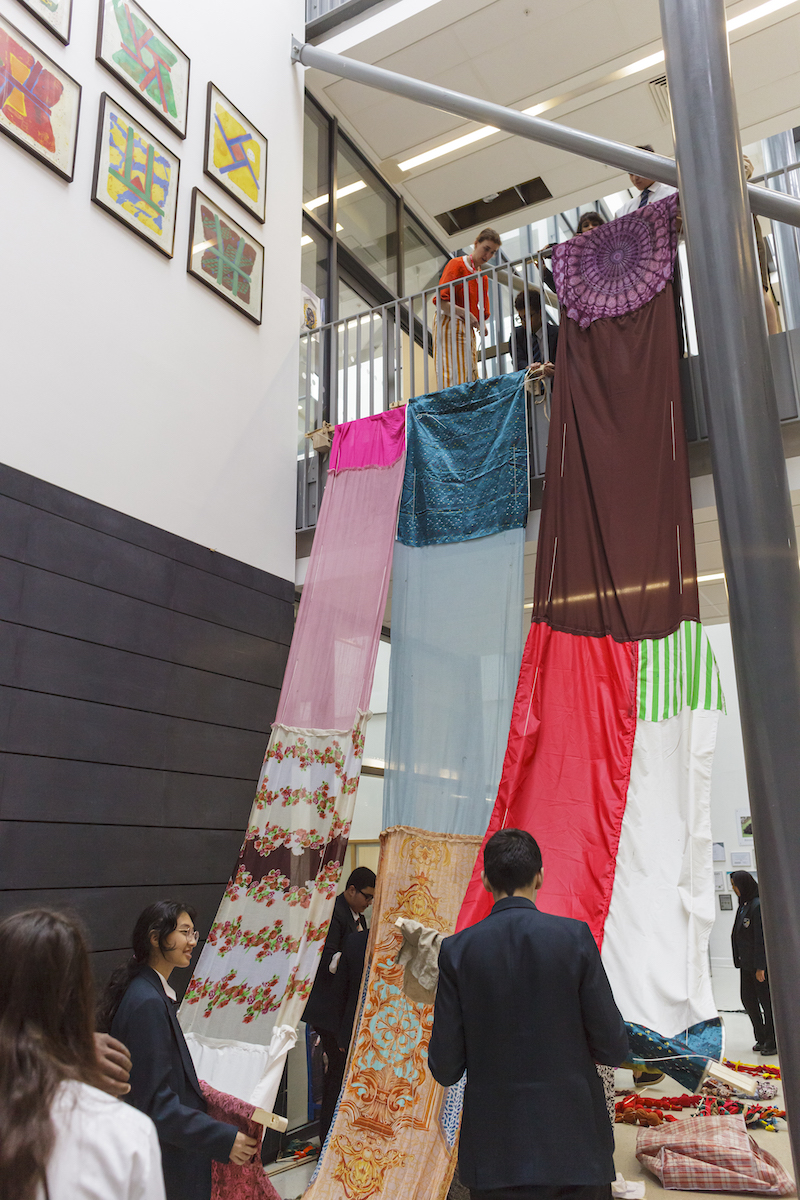

Waste Crisis
Many sectors are grappling with the issue of waste, not least fashion. With the rise in fast fashion, garments are designed and produced for short-term trends, creating a culture of disposability. This leads to an excessive overproduction of clothes, with an overwhelming amount of textile waste that ends up in landfills, as evidenced by the shocking images of the Atacama desert dumpsite in Chile, where the mountain of discarded clothes is so large, it can be seen from space. Ultimately, this contributes to a rise in greenhouse gas emissions and environmental degradation, with the total emissions from textiles production currently sitting at 1.2 billion tonnes annually. Moreover, the speed and scale of clothes production has also led to a shift in material quality, with around 60% of our clothes today actually being made out of plastics, such as polyester and nylon. Every time these clothes are washed, they produce microfibres, a form of microplastics, that then get released into the ocean. Laundry alone contributes to half a million tonnes of ocean plastic microfibers every year. In our initial design workshops with the students, we presented them with this information, and challenged them to design installations that bring to light this sense of waste, and the creative potential in recycling and reusing.
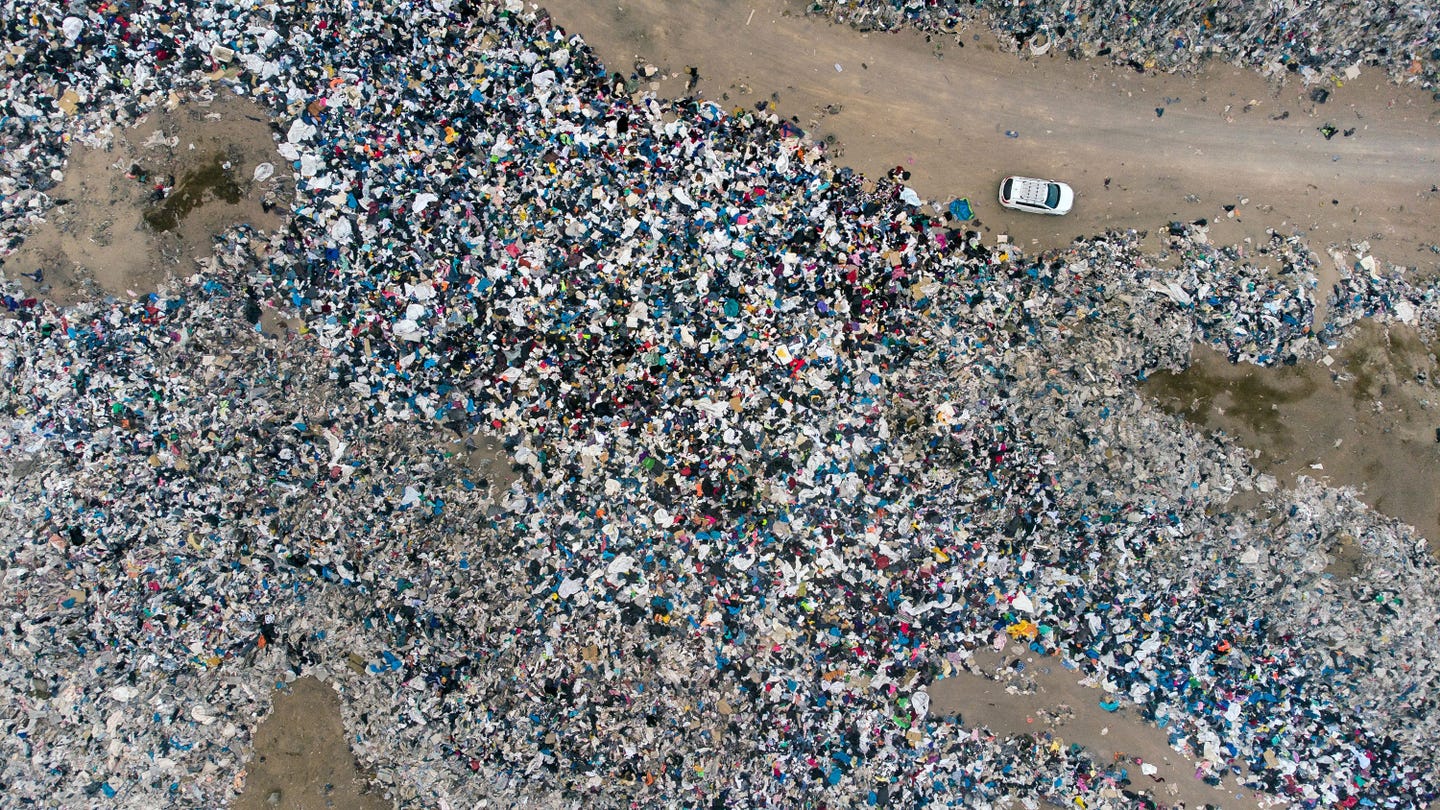
Doing these projects is so incredibly important. I don't think we often see the pride students have in themselves and their work at the time, but after the dust has settled and they see what they have created - it's confirmation of their achievement. I even saw [two students] showing a group of year 7s today and explaining what it was for. They were extremely confident tour guides!

The Recycled Room is the Foundation’s inaugural Big Build, creating an opportunity for students to share their learning and passion through an installation and exhibition. The Recycled Room created by Stratford School will be open to the public at The Lab E20 from 4 July, throughout summer 2023, with the support of Get Living and RAEBURN.
By Elise Nwokedi